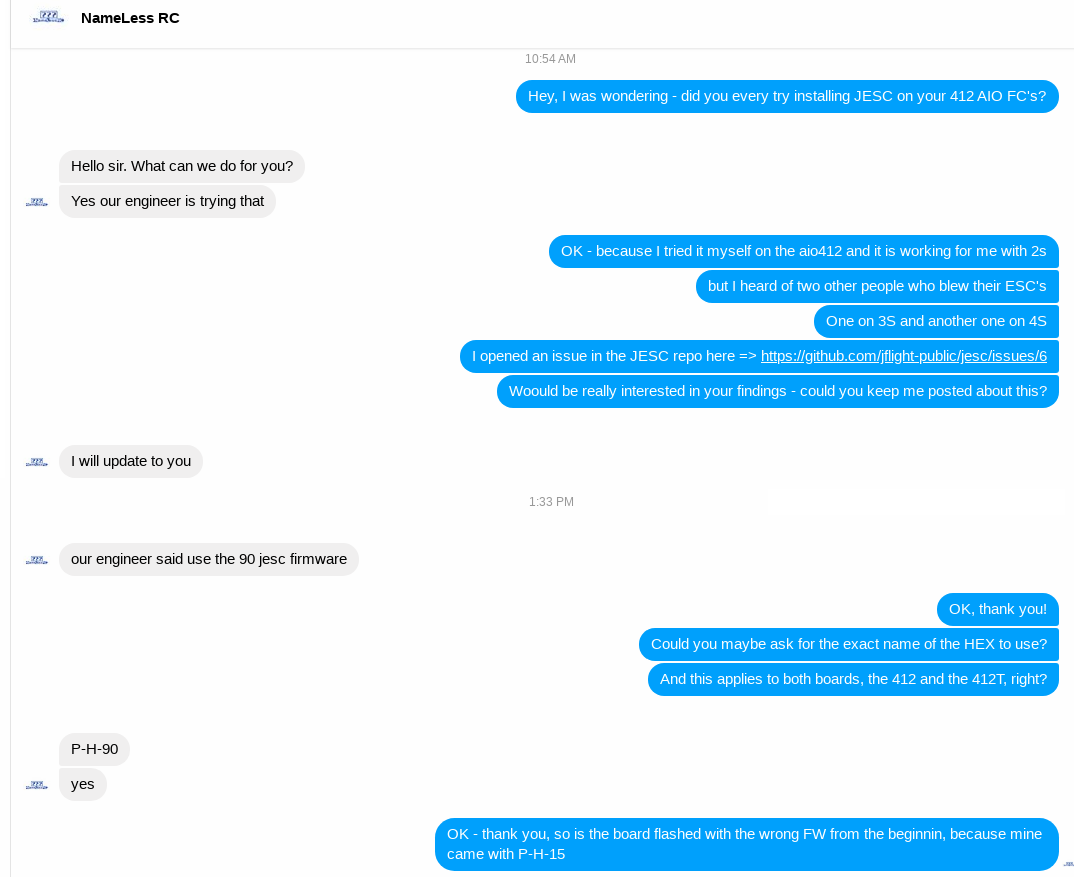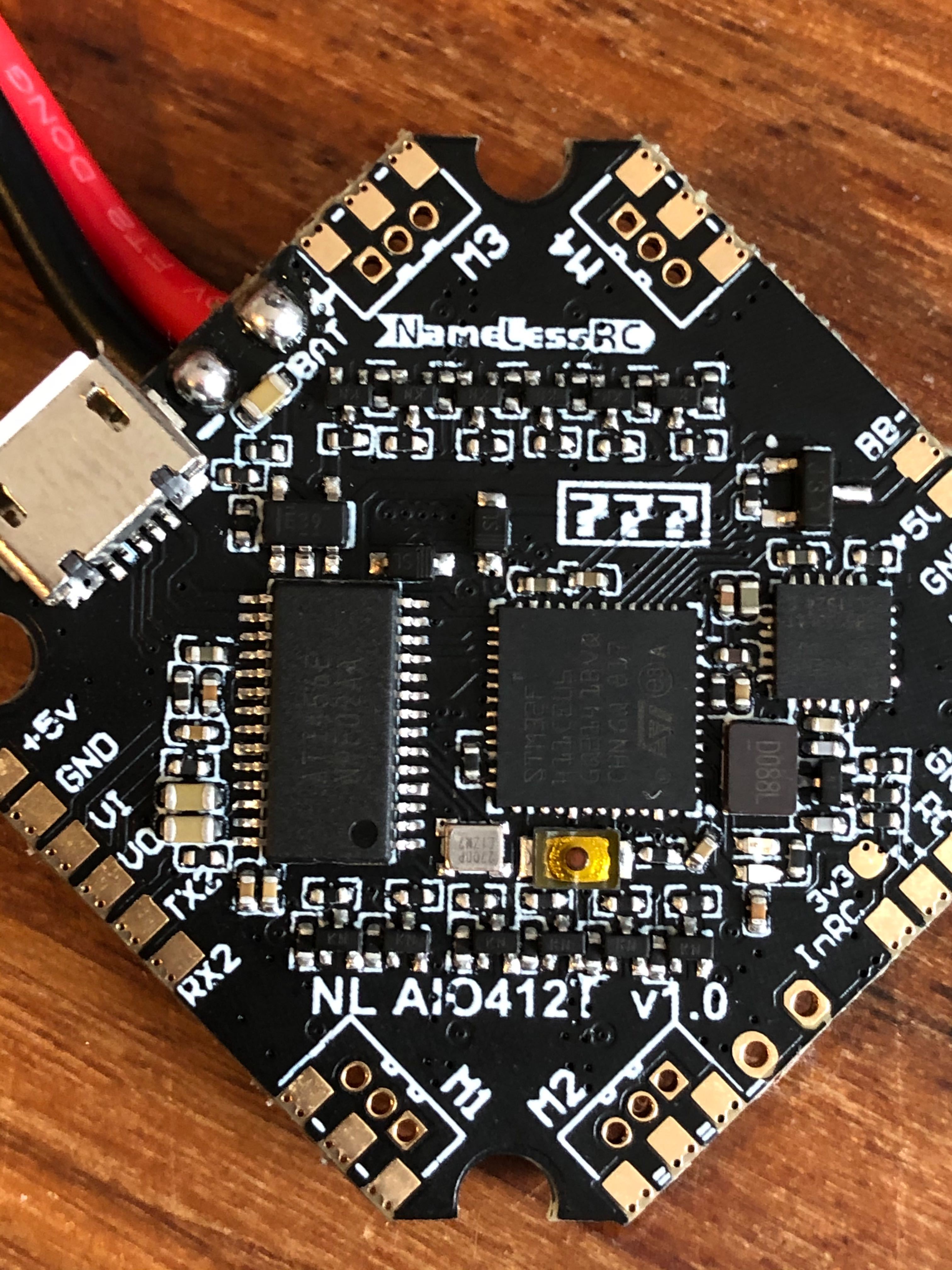I am the guy with the 1304 motors. Very odd issue. I am running this firmware on a bunch of other builds without issues (some AIO fcs). After I flashed the firmware, the motors initially armed but than I got some smoke from the board and it appears some of the escs burned out.






I came across a very strange issue - unfortunately not personally, but I have now heard from two people that the solder joints of the motors get so hot after flashing JESC that the motor wires de-solder. Re-flashing the original version of BLHELI_S does not seem to solve the issue.
One of those cases (and attempt of debugging) is documented in the comments here => https://brushlesswhoop.com/blheli_s-rpm-filter/ NLRC 412T, 1206 motors on 3S, BF4.1 RC1.
Another case I came across on Facebook just now - NLRC 412T, 1304 motors on 4S.
Interestingly enough I have no problems on my NLRC AIO 412 with 1103 motors on 2S, BF4,1 RC1.
I would like to help debugging, but I am not sure which information I can help out with.